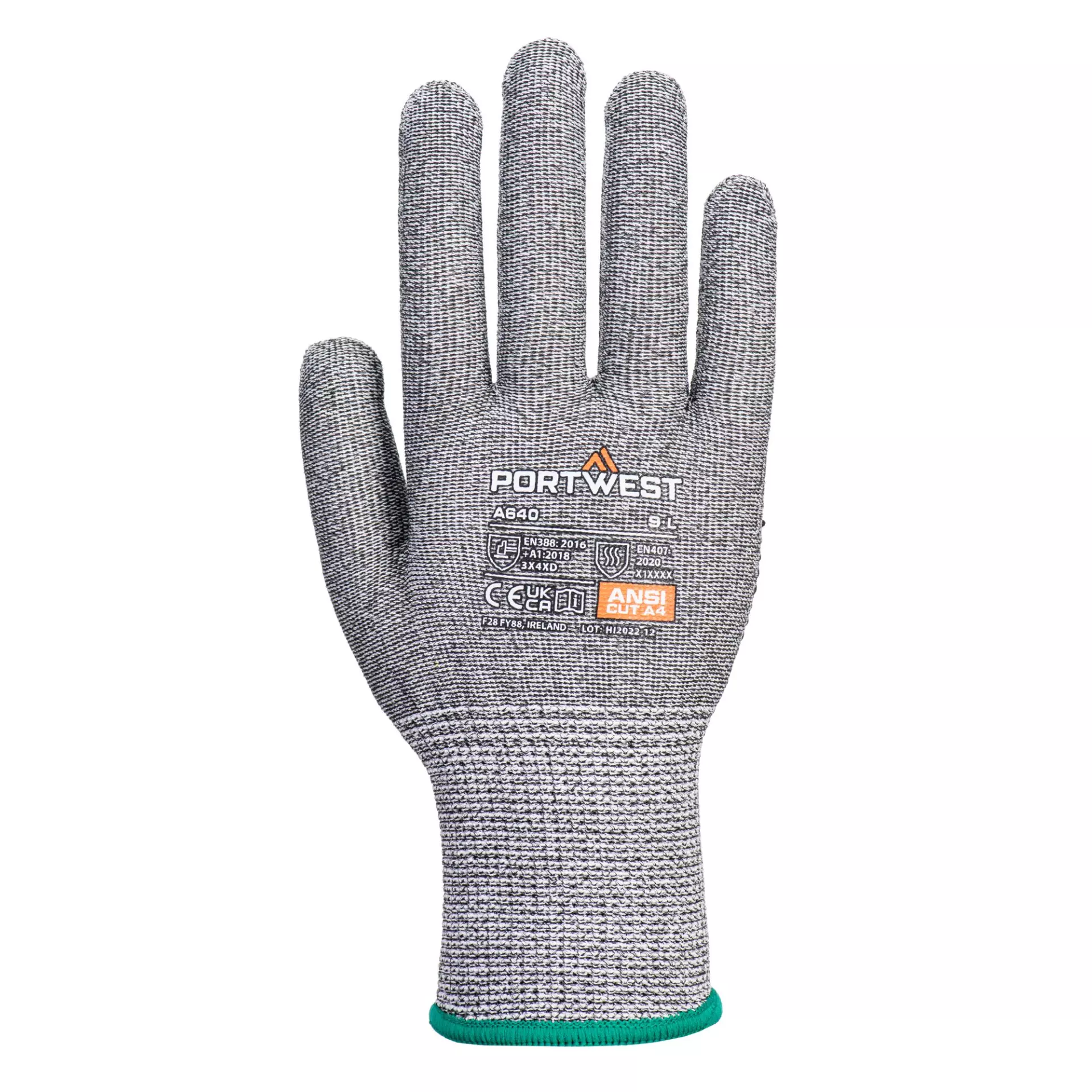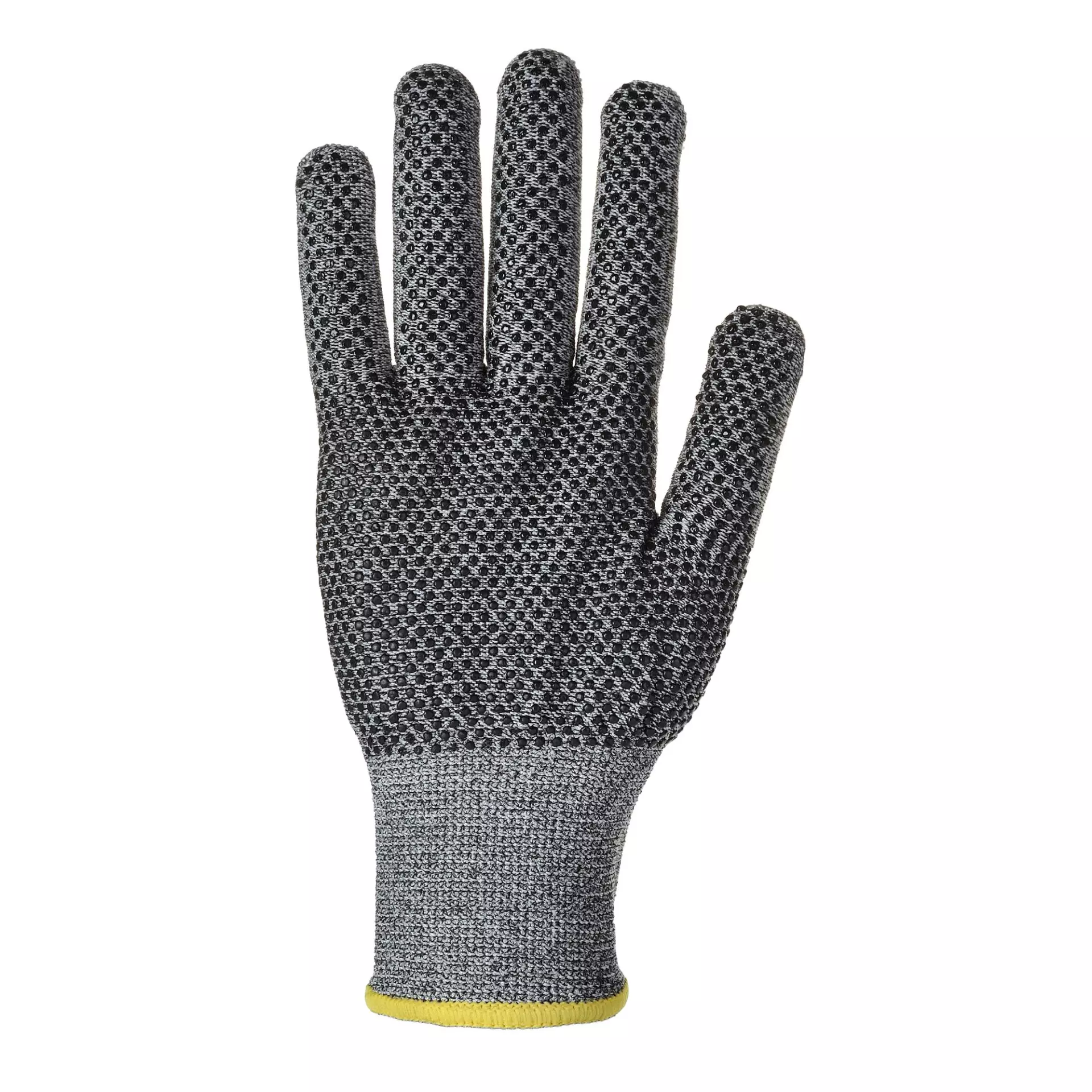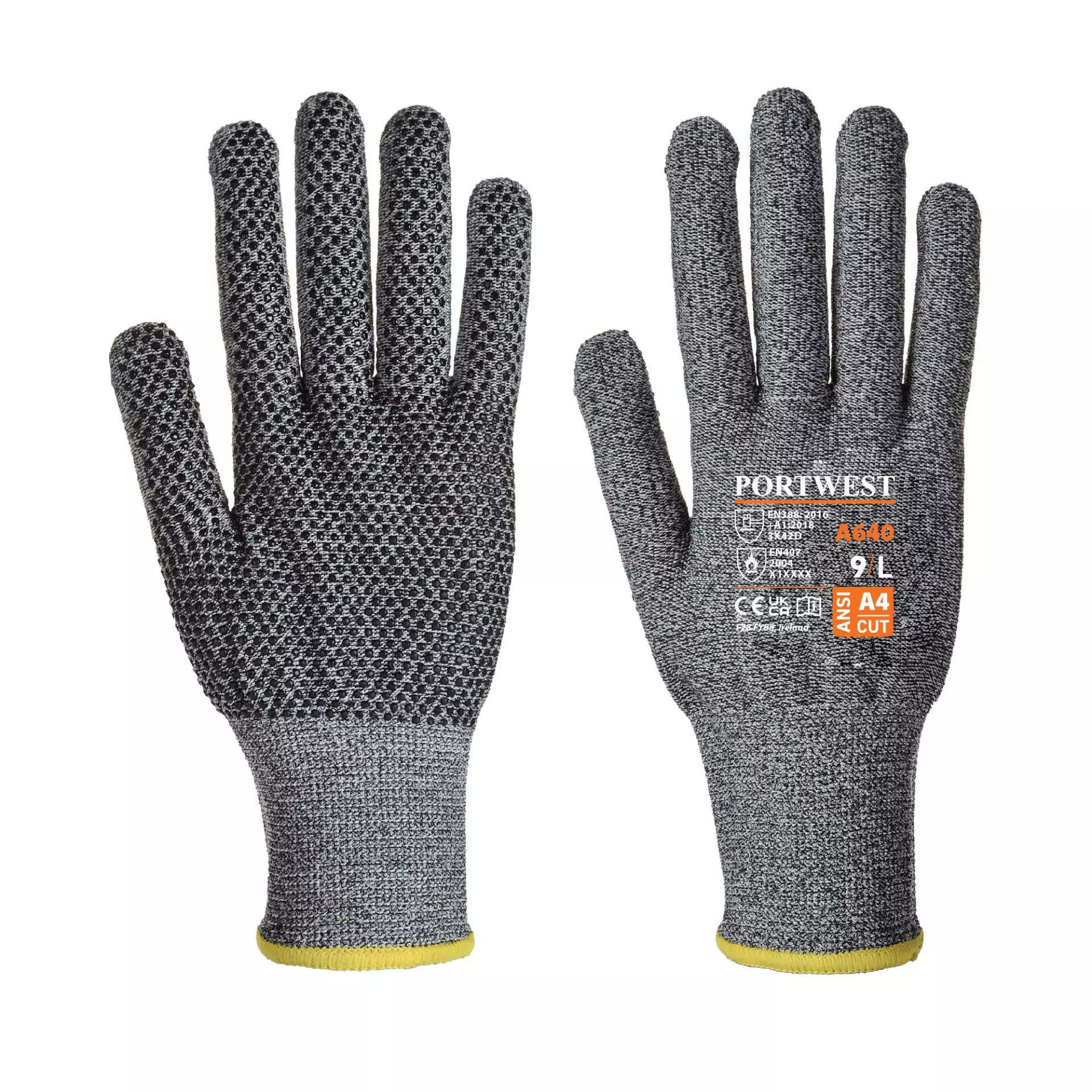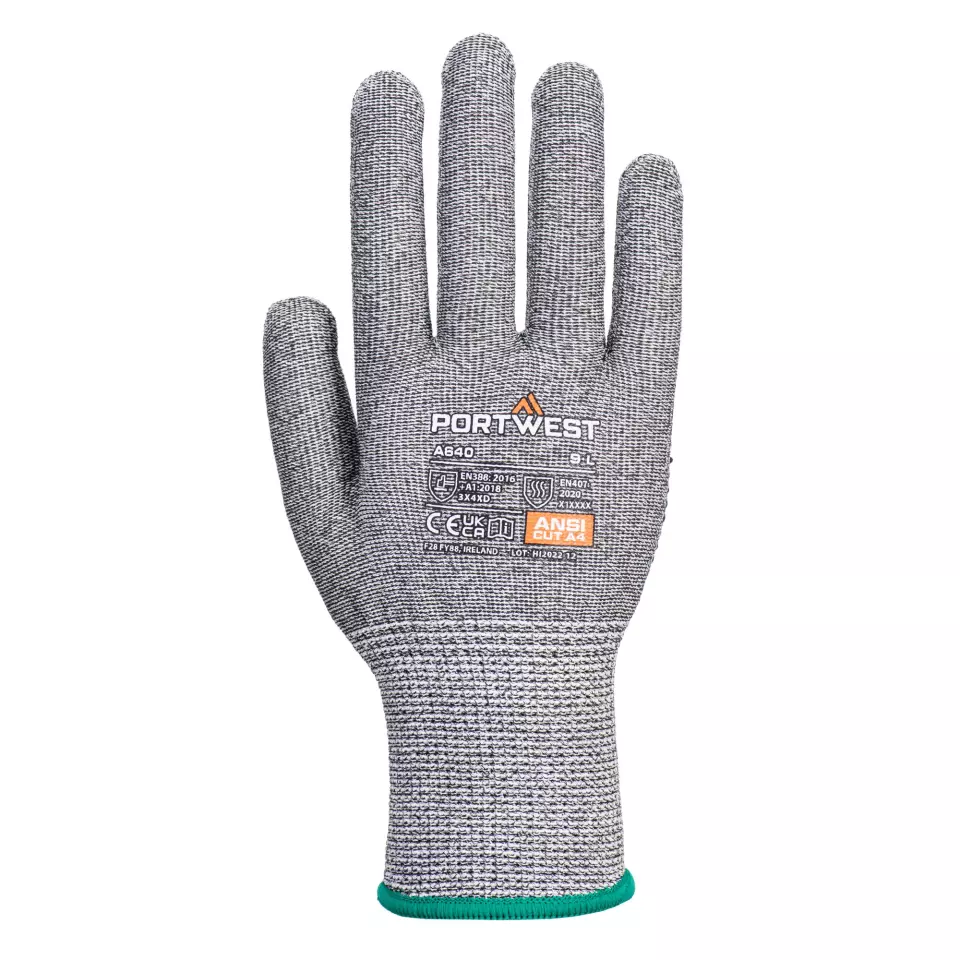


Features You'll Love

EN 388 · Tear Resistance Level 4, Cut Resistance, ISO 13997 Level D
Offers the highest level of protection against tearing, withstanding a strong force before ripping.
Offers strong protection against cuts from utility knives, glass edges, and sheet metal.
Portwest
Sabre-Dot Glove, Grey, 12 pairs
Sabre-Dot Glove, Grey, 12 pairs
4.7 / 5
875,80 kr
Price per 12 pairs
72,98 kr / pair
Choose size
Free delivery
Features You'll Love

EN 388 · Tear Resistance Level 4, Cut Resistance, ISO 13997 Level D
Offers the highest level of protection against tearing, withstanding a strong force before ripping.
Offers strong protection against cuts from utility knives, glass edges, and sheet metal.
Product description
Premium cut-resistant gloves featuring a 13-gauge liner construction that achieves Level D cut protection while maintaining dexterity and precise fit. The PVC dotted palm design enhances grip performance for secure handling of sharp objects, while the low-linting construction minimizes contamination risks. These gloves provide contact heat protection up to 100°C and perform optimally in dry working conditions.
Product Features:
- Level D cut resistance for superior protection
- 13-gauge liner construction for durability and precise fitting
- PVC dotted palm for enhanced grip performance
- Low linting construction for minimal contamination
- Contact heat protection up to 100°C
Technical Details:
- Performs well in dry conditions
- CE certified and UKCA marked
- Dexterity rating: 4
Standards:
- EN ISO 21420: 2020 Dexterity 4
- EN 388: 2016 + A1: 2018 (3X4XD)
- EN 407: 2020 (X1XXXX)
- ANSI/ISEA 105: 2016 CUT Level (A4)